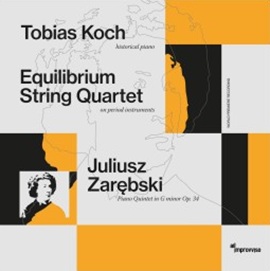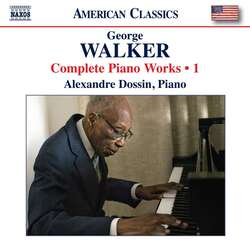Der amerikanische Komponist George Walker (1922–2018), der 1996 den Pulitzer Preis gewann, studierte bei Rosario Scalero und Nadia Boulanger. Er hat rund hundert Werke veröffentlicht, darunter Orchesterwerke, Stücke für Chor, Blechbläser, Holzbläser, Streicher, Gesang und Orgel, sowie viele Klavierwerke, darunter allein fünf Sonaten.
Den Kompositionen auf diesem Album nach zu urteilen ist diese Klaviermusik mitteilsam, farbig und entsprechend ausdrucksvoll und, vor allem, charakteristisch.
Als Schüler von Rudolf Serkin war er selber ein hervorragender Pianist mit einer beeindruckenden Karriere in Europa und den Vereinigten Staaten. Das mag für sein Talent als Komponist förderlich gewesen sein.
Das Album beginnt mit dem auf Anhieb ansprechenden Prelude and Caprice, einem Frühwerk von 1941.
Es folgen die beiden ersten Sonaten. Die erste wurde 1953 komponiert und 1991 revidiert. Der zweite Satz besteht aus Variationen, die auf dem zarten Volkslied O Bury Me Beneath The Willow basieren.
Die Klaviersonate Nr. 2 (1956) ist kürzer als die erste, dauert nur 10 Minuten und besteht aus vier kompakten Sätzen, in denen der Komponist die Expressivität in kurzer Aussage schärft.
Spatials (1961), besteht aus Variationen in zwölftöniger Form, während Spektra (1971) sehr frei atonal und auch rhythmisch frei ist. Walker sagte einmal (zitiert von Jeffrey Chappell): « Ich habe Spektra mit der Idee geschrieben, eine schillernde Qualität zu schaffen, die Licht- und Farbblitze suggerieren würde. Da ist auch die Idee des Impulses, der Unvorhersehbarkeit und des ständigen Wechsels des Registers des Instruments. »
Die drei Sätze der Klaviersonate Nr. 3 (1975, überarbeitet 1996) tragen jeweils einen Titel: Fantoms, Bell sowie Choral and Fughetta. Der Satz Bell ist besonders interessant. Er besteht aus einem einzigen Akkord, der 17 Mal gespielt und dynamisch wie farblich variiert wird.
Das kurze virtuose Bauble von 1979 beendet das Programm, in dem sich Alexandre Dossin als versierter Interpret zeigt, der sich die Tonsprache von Walker in einem flexiblen und feinfühligen Spiel zu eigen macht.
The American composer George Walker (1922-2018), who won the Pulitzer Prize in 1996, studied with Rosario Scalero and Nadia Boulanger. He published about one hundred works, including orchestral works, pieces for choir, brass, woodwinds, strings, voice, and organ, as well as many piano works, including five sonatas alone.
Judging by the compositions on this album, his piano music is communicative, colorful, expressive and, above all, characteristic.
As a student of Rudolf Serkin, he was himself an outstanding pianist with an impressive career in Europe and the United States. This may have been conducive to his talent as a composer.
The album opens with the immediately appealing Prelude and Caprice, an early work from 1941.
This is followed by the first two sonatas. The first was composed in 1953 and revised in 1991. The second movement consists of variations based on the tender folk song O Bury Me Beneath The Willow.
The Piano Sonata No. 2 (1956) is shorter than the first, lasting only 10 minutes and consisting of four compact movements in which the composer sharpened the expressiveness in a short statement.
Spatials (1961) consists of variations in twelve-tone form, while Spektra (1971) is very freely atonal and also rhythmically free. Walker once said (quoted by Jeffrey Chappell): « I wrote Spektra with the idea of creating a dazzling quality that would suggest flashes of light and color. There is also the idea of momentum, unpredictability, and the constant changing of the instrument’s register. »
The three movements of the Piano Sonata No. 3 (1975, revised 1996) each have a title: Fantoms, Bell and Choral, and Fughetta. The Bell movement is particularly interesting. It consists of a single chord played 17 times and varied both dynamically and in color.
The program concludes with the short virtuoso Bauble from 1979, in which Alexandre Dossin shows himself to be an accomplished interpreter, making Walker’s tonal language his own with his flexible and sensitive playing.























